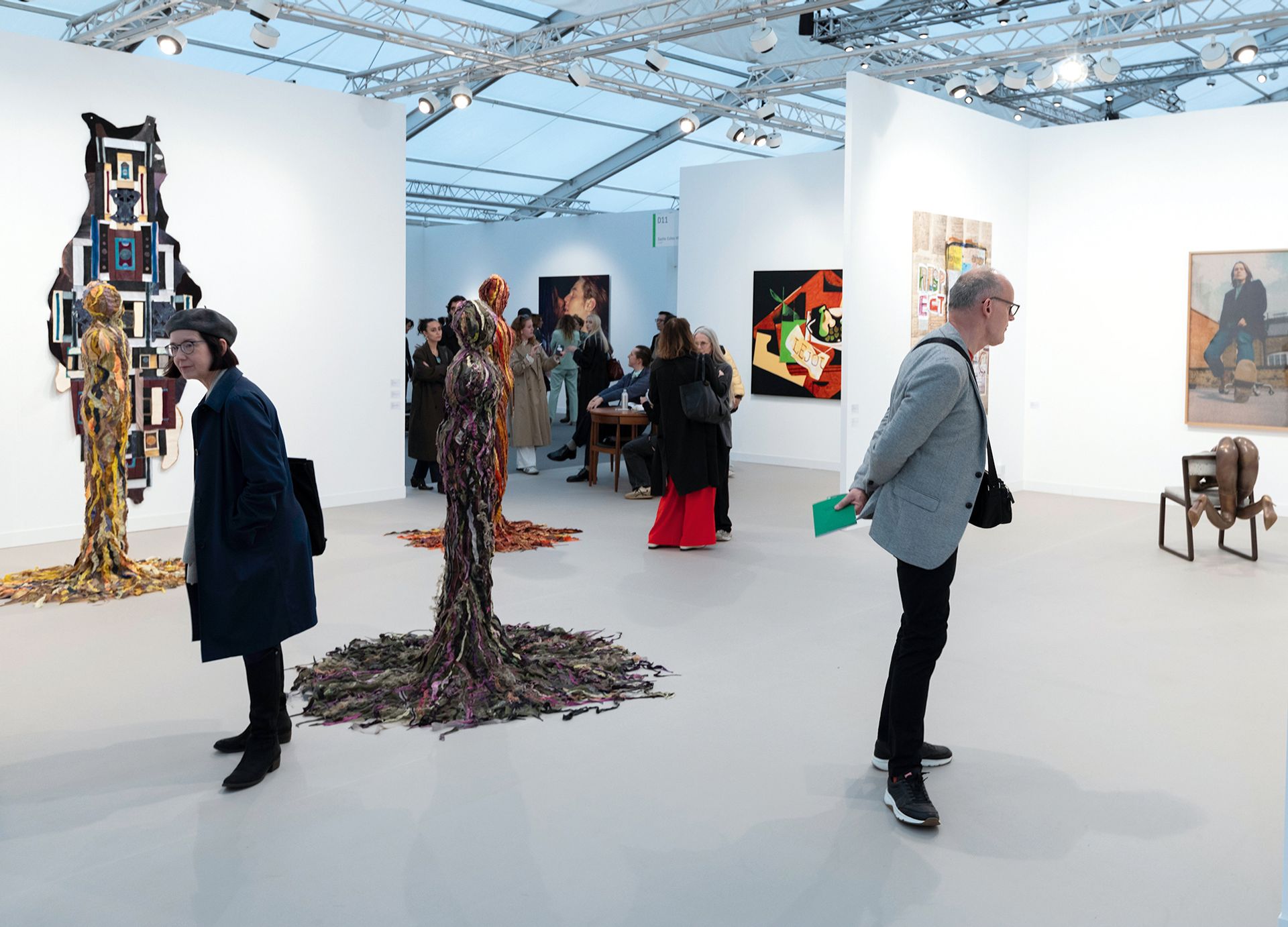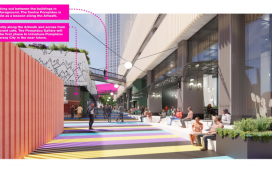What a difference two years makes. In October 2022 the market for so-called ultra-contemporary art—created by artists under 40—was thriving. New works by young artists were high in demand at Frieze, reflecting a surge in prices at auction.
Last year, things began to falter. Total sales prices at auction for
Flora Yukhnovich, who was hot in demand on the stand of Victoria Miro two years ago, plummeted 88% in 2023 compared to the year before, according to ArtTactic’s NextGen Artist Monitor report, published in February. She was not alone. In 2023, Njideka Akunyili Crosby’s auction sales dropped 72%, Salman Toor’s fell 68%, and Avery Singer’s fell by 63%. There were others who bucked the trend: Jadé Fadojutimi, Tala Madani and Adam Pendleton among them. But, overall, the market for ultra-contemporary artists fell by 43% in 2023. That trend continues into 2024: ultra-contemporary sales are down 53% in the first half of this year, according to ArtTactic.
Feeling the pinch, Sotheby’s is not holding its Now auction this week; the sale format, launched in London in March 2022, was dedicated to the newest of works. “It’s no secret that there has been a market contraction,” says Michael Macaulay, Sotheby’s deputy chairman of contemporary art in London. “The individual artist markets that are seeing the most fluctuations and have been more volatile [are of] the newer material.”
While the auction market has publicly taken a dive, the ultra-contemporary primary market is less easy to quantify. But—if the press releases are to be believed—sales have been consistent this week at Frieze London, where prices points tend to hover between a few thousand and £200,000. At auction, too, the sub $50,000 market for ultra-contemporary works remains active. “It’s not all doom and gloom, people are still wanting to buy and sell,” says Lindsay Dewar, the head of analytics at ArtTactic. “It’s more that we are not seeing the trophy lots selling at the moment. Money isn’t cheap anymore.”
This week, some of the bigger ticket—and more historical—items have been selling at Frieze Masters, where a growing number of contemporary galleries are exhibiting.
At Frieze London, bigger galleries are also faring better with more established names, a tried-and-tested strategy during fallow periods for market newbies. Hauser & Wirth is showing works on paper by the octogenarian Charles Gaines; five sold on the opening day with prices ranging from $175,000 to $195,000. Whereas two years ago, Gagosian gallery showed a suite of seven monumental paintings fresh from the studio by the then 29-year-old British abstract painter Jadé Fadojutimi, this year the mega dealer has opted for an “anti-booth” without walls housing nine industrial-grade sculptures by the mid-career artist Carol Bove. All had sold within hours of the fair opening; sources say the works were priced at $850,000 each. Next door, David Zwirner (who represented Bove until September 2023) reported sales totalling around $4.6m on the first day (one painting by Lisa Yuskavage accounted for $2.2m of that).
Up to $100,000 is ‘comfortable’
The mega dealers are now congregated at the back of the fair—a move intended to give greater prominence to smaller and mid-sized galleries at the entrance to the tent. The London dealer Alison Jacques says her clients have responded positively, though she acknowledges she has a plum spot at the front of the fair. “The issue will be whether the large multi-city galleries will feel good being positioned together at the back of the fair,” she says.
Jacques notes that, “in the context of a chilly market”, sales were “good” on the opening day. “Up to a price range of $100,000 felt like the comfortable point for a lot of clients buying, but that may be because people are taking their time before confirming sales on works above that price point,” she adds.
“The recession in the art market has done wonders for price corrections. Art is affordable suddenly”
Jerry Gogosian, satirist
Many now consider it a buyers’ market, with dealers being more flexible when it comes to discounts. Posting on Instagram during the VIP opening on Wednesday, the art market satirist Jerry Gogosian wrote: “The recession in the art market has done wonders for price corrections. Art is affordable suddenly.”

Looking for clues: fair-goers at Sadie Coles HQ’s stand, which featured work by young artist Tau Lewis alongside more established names David Owens
One American collector who preferred to remain anonymous says the larger galleries are facing a “crisis” in pricing, chiefly because they are facing much steeper costs, particularly when it comes to exhibiting at art fairs. “Galleries are still trying to pass those costs onto the buyer, which is not sustainable,” he says. Equally unsustainable, he adds, are the hikes in primary market prices that dealers have made in the wake of young artists’ artificially inflated auction values.
Galleries are finding other ways to keep the market moving. Suzanne Modica of the New York-based art advisory Modica Carr says there is still “talk of taking interest” on works at the fair, but “recognising there is another art fair next week, gallerists would prefer to avoid the uncertainty and lock in brisk sales”. Presenting the gallery with a confirmed buyer “has greased the wheels in a few instances”, she adds. While this may not fully equate to a complete power shift, “it does indeed move the needle towards the buyer”.
Secondary market is negotiable
Modica observes that, on the primary market, a 10% discount is still the norm, unless multiple works are being acquired. “On the other hand, the secondary market remains very negotiable,” she says.
While the global art market has been buffeted by economic and political headwinds, London is facing its own unique set of problems—Brexit and the rise of Paris chief among them. Speaking on the BBC Today radio programme earlier this week, the Frieze chief executive Simon Fox called for a “relaxation of the rules” concerning the freedom of movement of cultural goods and workers that have hampered the creative industries post-Brexit. He also called for a tourism tax to be added to hotel bills “to fund the free museums that we have up and down the country that are struggling to make ends meet”.
In the run-up to Frieze, there was talk of American buyers plumping for Art Basel in Paris instead of London, though this theory has not altogether been borne out. “There are certainly plenty of US-based advisers in London, but given that many collectors are unable to devote two full weeks to the fairs, we are finding that clients are, by and large, opting for Paris,” Modica says. “We are also seeing many collectors visiting London over the weekend before [getting the train] to Paris, with more of an eye on gallery and institutional shows. They still desire to be ‘in the know’ but might prefer to save their buying power for Paris.”
Whereas Frieze was launched as a fair for more affordable cutting-edge art two decades before the term “ultra-contemporary” was coined, Art Basel has always had a more established blue-chip focus. Whether this will stand the Paris fair in good stead next week, or whether those price points will just feel too high, remains to be seen.








